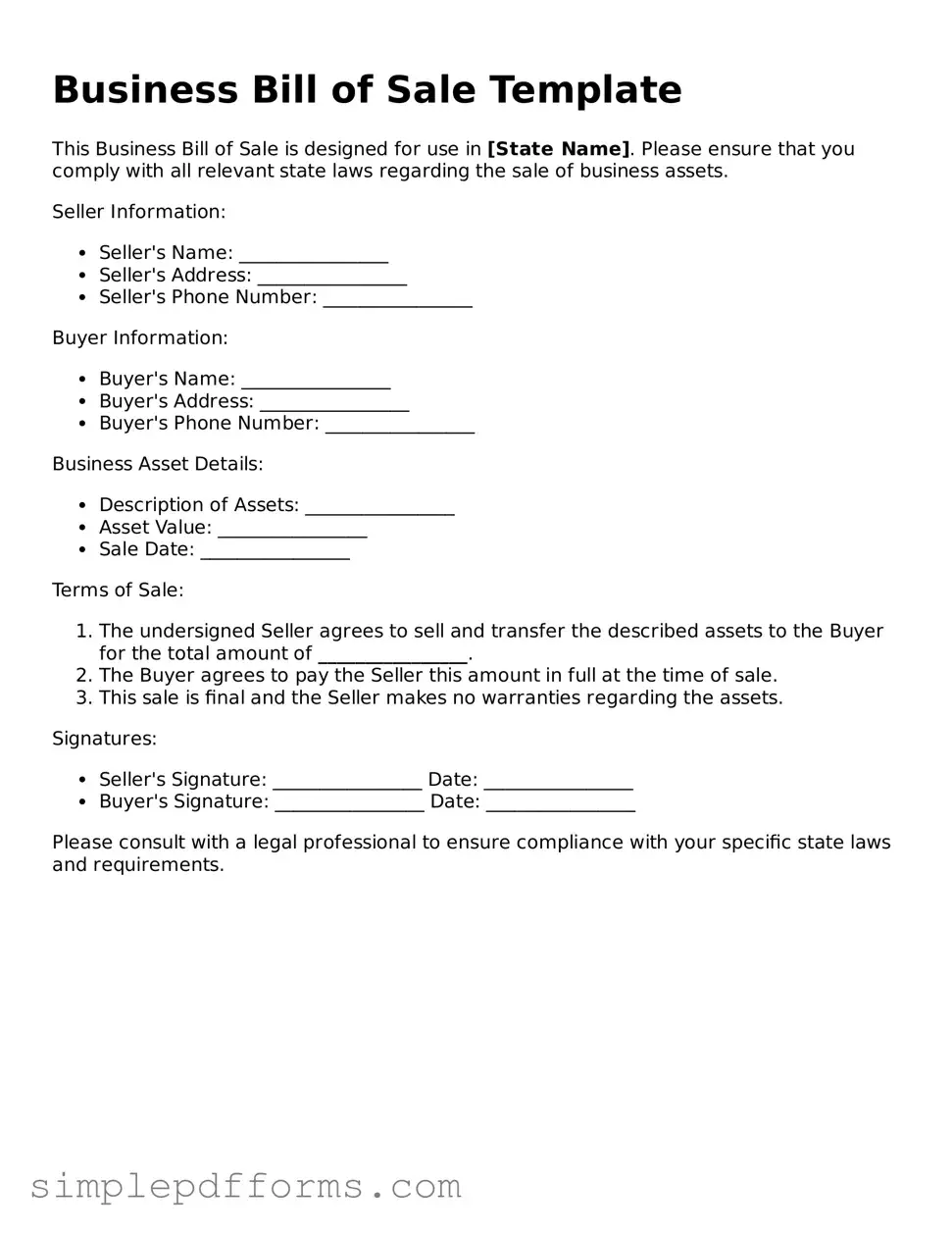When completing a Business Bill of Sale form, individuals often overlook crucial details that can lead to complications later on. One common mistake is failing to provide accurate descriptions of the business being sold. This includes neglecting to specify the assets involved in the sale, such as equipment, inventory, or intellectual property. Without a clear and detailed description, disputes may arise regarding what was included in the transaction.
Another frequent error is not including the sale price or terms of payment. The form should clearly state the agreed-upon price for the business and any payment arrangements, such as installments or financing options. Omitting this information can create confusion or lead to disagreements between the buyer and seller regarding the financial aspects of the sale.
Many individuals also forget to include the date of the transaction. This seemingly minor detail is vital, as it establishes the timeline for the transfer of ownership and can affect tax implications. The absence of a date can result in complications during audits or if legal issues arise in the future.
In addition, some people neglect to have both parties sign the document. A Business Bill of Sale is only valid when it is signed by both the buyer and the seller. Without these signatures, the agreement may not be enforceable, leaving one party vulnerable to claims or disputes regarding the sale.
Lastly, individuals often fail to keep copies of the completed form. After the sale is finalized, both parties should retain a copy for their records. This practice is essential for future reference, especially in case of any disputes or if proof of the transaction is required later on. Keeping a record ensures that both parties have access to the same information regarding the sale.
